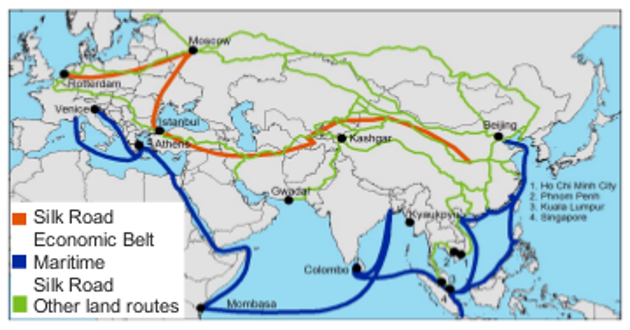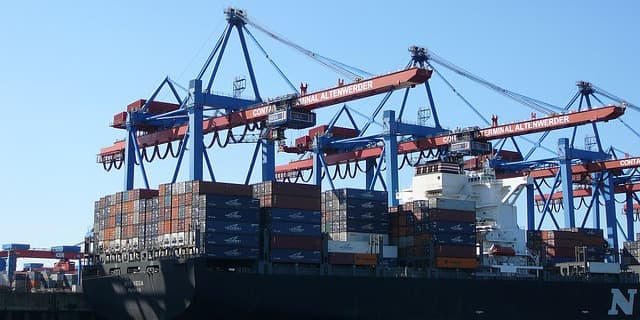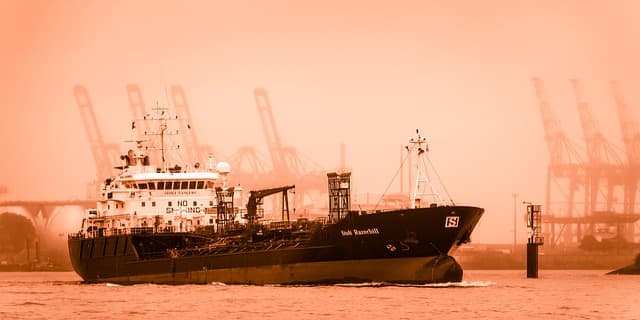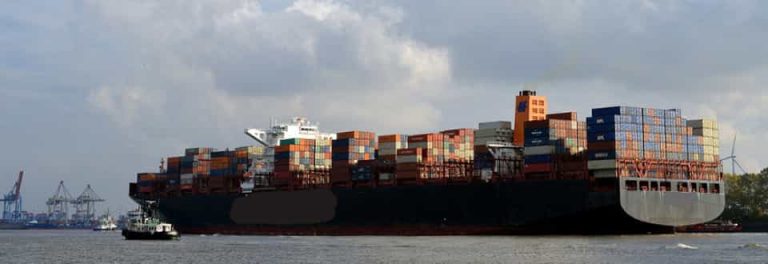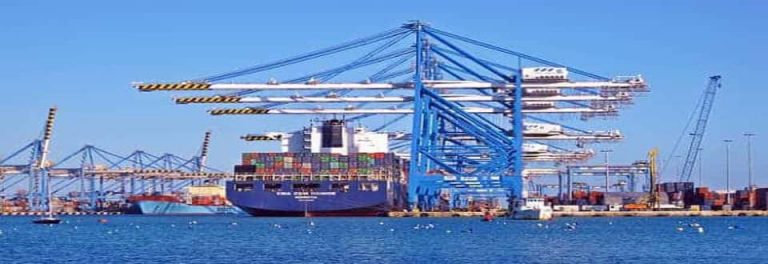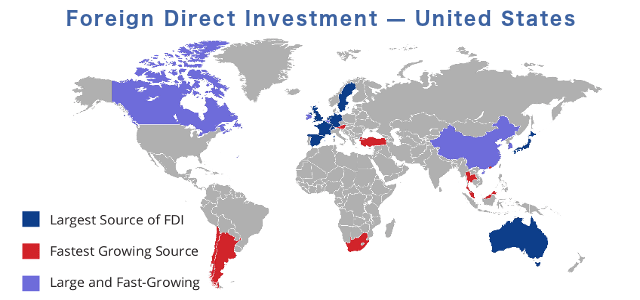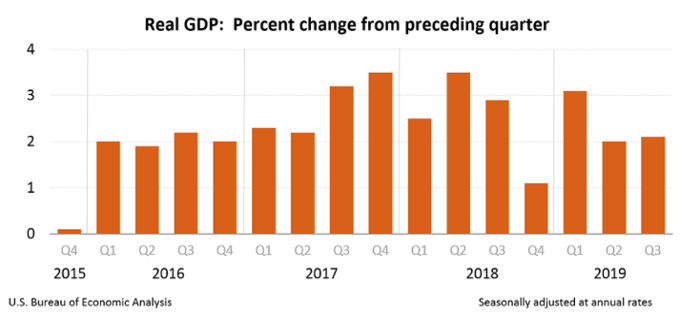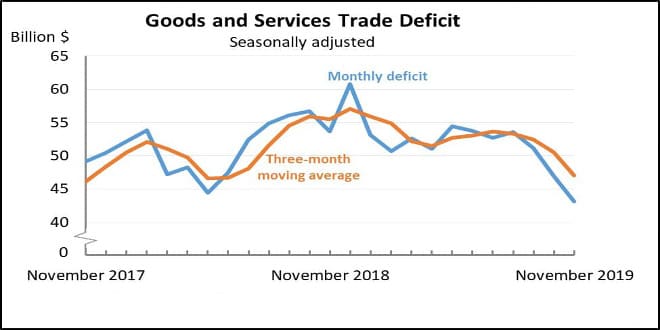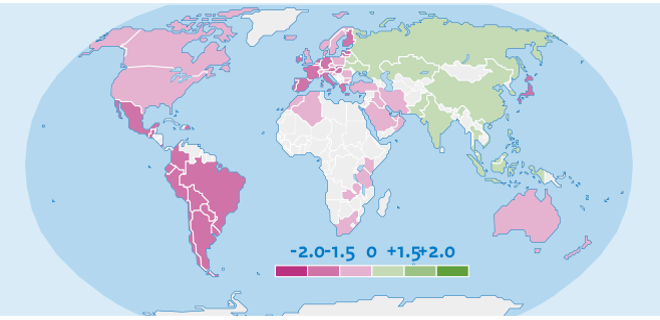An Interconnected & Interlinked World of Business, Trade, and Commerce.
The Glossary & Terminology of Global Trade & Commerce || The Need and Logic of It
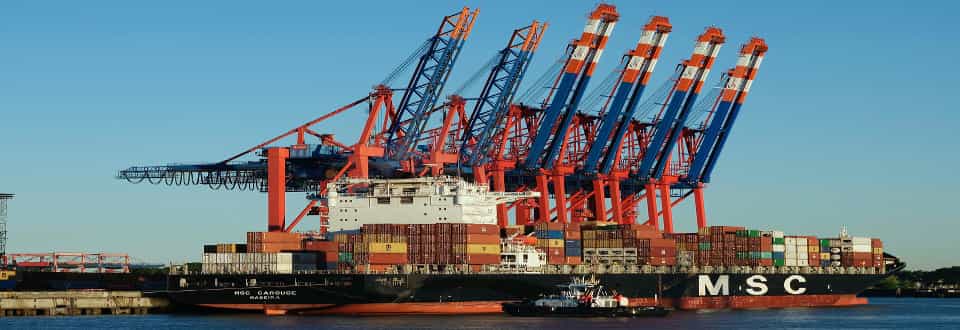
Modern Glossary of shipping and freight traces its roots to the old maritime trade terms and codes evolved over centuries. The glossary has been standardized and further expanded to satisfy the needs of international trade and multinational shipping industry.
Like any other industry or professional field, the shipping/freight industry also has its own unique set of terminology or ‘jargons’—A rather extensive, complex, and, for those not well versed in it, quite a confusing one. The same terminology—with the exception of a few country specific codes, is also used by the Commerce and Customs departments, and the banking and insurance industry of all the countries across the world.
Complexity of The Logistics of Global Trade and Shipping
When we consider the gargantuan volume of global trade, and the number of institutions, authorities, agencies, and transportation systems involved in regulating and facilitating it, we can understand the complexity of the logistics involved in keeping the global trade flow smoothly and uniformly across the borders.
The volume of maritime trade in 2017 was 10.7 billion metric tonnes. For 2019, total seaborne trade is projected to exceed 12bn metric tons. The Nominal value of world merchandise trade totaled US $19.48 trillion in 2018.
This billions of tons of cargo that is imported and exported by various economies of the world is comprised of thousands of categories of different items that are subject to varying sets of custom duties, rules, and regulation by different county. All the items in the cargo boxes/containers that are being shipped must need to be itemized and categorized to make possible its proper identification, and export and import clearance.
Thousands of cargo ships and some 6,000 very large volume container liner ships operated by the Liner Shipping companies carry all this merchandise—composed of hundreds of thousands different type and classes of items, across the globe.
Super capacity container shipping ports all over the world remain busy around the clock to facilitate the sorting, organizing, and moving of the goods arriving and departing daily packed in thousands of shipping containers.

The logistics of the movement of such a humongous amount of merchandise—and, it’s regulation and management at global level, requires standardization of all the items to concisely represent each term, and make it recognized and accepted universally. It is a very complicated task.
The terms that we encounter in dealing with the global trade logistics have evolved — and, have been agreed upon, over a long period of time.
The modern glossary of shipping logistics and supply chain has it’s roots in a short list of some very basic terms that were adopted from the era of early maritime global trade transported via the Sail Ships of a bygone era.

Understanding and utilizing the glossary of shipping logistics and supply Chain seems very confusing and difficult at first glance. But, with a little efforts it all falls in place like the pieces of jigsaw puzzle connecting together—bringing the entire landscape in focus.

Understanding the global trade and shipping terms and their abbreviations is essential for the people whose business is to deal with the freight, shipping, and customs etc. Right interpretation and usage of the proper shipping language helps avoid misunderstandings, which may lead to errors and negatively affect performance and revenue of the business.
Here we have compiled the Glossary of the most useful terms—with the perspective of Businesses/Shippers, used in the shipping, logistics, and supply chain related industry to help our readers familiarize themselves with the terms and language of the industry.
Glossary of the Terminology of Shipping
and Supply Chain Logistics
Abatement
A discount allowed for damage or overcharge in the payment of a bill.
ABI
U.S. Customs’ “Automated Broker Interface,” by which brokers file importers’ entries electronically.
Acquiescence
When a bill of lading is accepted or signed by a shipper or shipper’s agent without protest, the shipper is said to acquiesce to the terms, giving a silent form of consent.
Acquittance
A written receipt in full, in discharge from all claims.
Automated Export System (AES):
A computerized system that the US government requires exporters to declare their international shipments. The data required is called EEI (Electronic Export Information) and is used by the Census Bureau and other federal agencies who oversee import-export. Typically a freight forwarder will handle the necessary AES filings for clients, but be sure to ask your company what its policies are. With a few exceptions, export shipments with a value of greater than $2,500 are required to be registered in the AES.
Automated Clearing House (ACH)
The primary electronic funds transfer (EFT) system used by agencies to make payments for financial transactions in the United States. ACH processes large volumes of credit and debit transactions in batches.
Ad Valorem
A term from Latin meaning, “according to value.” Import duty applied as a percentage of the cargo’s dutiable value.
Advance Shipment Notice (ASN)
A document transmitted (by courier, fax, or email) to a consignee in advance of delivery detailing the contents and particulars of a shipment. The particulars may include such items as shipment date, method of transport, carrier, expected date and time of arrival and a full listing of contents.
Adventure
Shipment of goods on shipper’s own account. A bill of adventure is a document signed by the master of the ship that carries goods at owner’s risk. Also, a term used in some insurance policies to mean a voyage or a shipment.
Advice of Shipment
notice sent to a local or foreign buyer advising that shipment has gone forward and containing details of packing, routing, etc. A copy of the invoice is often enclosed and, if desired, a copy of the bill of lading.
Advising Bank
A bank operating in the seller’s country that handles letters of credit on behalf of a foreign bank.
Air Waybill
The forwarding agreement or carrying agreement between shipper and air carrier and is issued only in nonnegotiable form.
Apparent Good Order
When freight appears to be free of damage so far as a general survey can determine.
Appraisement
Determination of the dutiable value of imported merchandise by a Customs official who follows procedures outlined in their country’s tariff, such as the U.S. Tariff Act of 1930.
Appraiser’s Stores
The warehouse or public stores to which samples of imported goods are taken to be inspected, analyzed, weighed, etc. by examiners or appraisers.
Bank Draft
An order issued by a seller against a purchaser; directs payment, usually through an intermediary bank. Typical bank drafts are negotiable instruments and are similar in many ways to checks on checking accounts in a bank.
Bank Guarantee
Guarantee issued by a bank to a carrier to be used in lieu of lost or misplaced original negotiable bill of lading.
BCO
Abbreviation for “Beneficial Cargo Owner.” Refers to the importer of record, who physically takes possession of cargo at destination and does not act as a third party in the movement of such goods.
Bill of Exchange
In the United States, commonly known as a “Draft.” However, bill of exchange is the correct term.
Bill of Lading (B/L)
A document that establishes the terms of a contract between a shipper and a transportation company. It serves as a document of title, a contract of carriage and a receipt for goods.
➡ There are many different types of B/Ls:
Amended B/L:
B/L requiring updates that do not change financial status; this is slightly different from corrected B/L.
B/L Terms & Conditions:
The fine print on B/L; defines what the carrier can and can- not do, including the carrier’s liabilities and contractual agreements.
B/L’s Status:
Represents whether the bill of lading has been input, rated, reconciled, printed, or released to the customer.
B/L’s Type:
Refers to the type of B/L being issued. Some examples are: a Memo (ME), Original (OBL), Non–negotiable, Corrected (CBL) or Amended (AM) B/L.
Canceled B/L:
B/L status; Used to cancel a processed B/L; usually per shipper’s request; different from voided B/L.
Clean B/L:
A B/L which bears no superimposed clause or notation which declares a defective condition of the goods and/or the packaging.
Combined B/L:
B/L that covers cargo moving over various transports.
Automated Clearing House (ACH)
Consolidated B/L: B/L combined or consolidated from two or more B/L’s.
Corrected B/L:
B/L requiring any update which results in money –or other financially related changes.
Domestic B/L:
Non–negotiable B/L primarily containing routing details; usually used by truckers and freight forwarders.
Duplicate B/L:
Another original Bill of Lading set if first set is lost. Also known as reissued B/L.
Express B/L:
Non–negotiable B/L where there are no paper copies printed of originals.
Freight B/L:
A contract of carriage between a shipper and forwarder (who is usually a NVOCC); a non–negotiable document.
Government B/L (GBL):
A bill of lading issued by a government.
Hitchment B/L:
B/L covering parts of a shipment which are loaded at more than one location. Hitchment B/L usually consists of two parts, hitchment and hitchment memo. The hitchment portion usually covers the majority of a divided shipment and carries the entire revenue.
House B/L:
B/L issued by a freight forwarder or consolidator covering a single shipment containing the names, addresses and specific description of the goods shipped.
Intermodal B/L:
B/L covering cargo moving via multimodal means. Also known as Combined Transport B/L, or Multimodal B/L.
Long Form B/L:
B/L form with all Terms & Conditions written on it. Most B/L’s are short form which incorporate the long form clauses by reference.
Memo B/L:
Un-freighted B/L with no charges listed.
B/L Numbers (US):
Customs’ standardized B/L numbering format to facilitate electronic communications and to make each B/L number unique.
Negotiable B/L:
Negitiable B/L is a title document to the goods, issued “to the order of” a party, usually the shipper, whose endorsement is required to effect is negotiation. Thus, a shipper’s order (negotiable) B/L can be bought, sold, or traded while goods are in transit and is commonly used for letter–of–credit transactions. The buyer must submit the original B/L to the carrier in order to take possession of the goods.
Non–Negotiable B/L:
See Straight B/L. Sometimes means a file copy of a B/L.
‘Onboard’ B/L:
B/L validated at the time of loading to transport. Onboard Air, Boxcar, Container, Rail, Truck and Vessel are the most common types.
Optional Discharge B/L:
B/L covering cargo with more than one discharge point option possibility.
“Order” B/L:
See Negotiable B/L.
Original B/L:
The part of the B/L set that has value, especially when negotiable; rest of set are only informational file copies. Abbreviated as OBL.
Received for Shipment B/L:
Validated at time cargo is received by ocean carrier to commence movement but before being validated as “Onboard”.
Reconciled B/L:
B/L set which has completed a prescribed number of edits between the shipper’s instructions and the actual shipment received. This produces a very accurate B/L.
Short Term B/L:
Opposite of Long Form B/L, a B/L without the Terms & Conditions written on it. Also known as a Short Form B/L. The terms are incorporated by reference to the long form B/L.
Split B/L:
One of two or more B/L’s which have been split from a single B/L.
Stale B/L:
A lateB/L; in banking, a B/L which has passed the time deadline of the Letter of Credit (L/C) and is void.
Straight (Consignment) B/L:
Indicates the shipper will deliver the goods to the con- signee.It does not convey title (non–negotiable).Most often used when the goods have been pre–paid.
‘To Order’ B/L:
See Negotiable B/L.
Unique B/L Identifier:
U.S. Customs’ standardization: four–alpha code unique to each carrier placed in front of nine digit B/L number; APL’s unique B/L Identifier is “APLU”. Sea–land uses “SEAU”. These prefixes are also used as the container identification.
Voided B/L:
Related to Consolidated B/L; those B/L’s absorbed in the combining pro- cess. Different from Canceled B/L.
Bill of Lading Port of Discharge
Port where cargo is discharged from means of transport.
Bill of Sale
Confirms the transfer of ownership of certain goods to another person in return for money paid or loaned.
Bill to Party
Customer designated as party paying for services.
Blanket Bond
A bond covering a group of persons, articles or properties.
Blanket Rate
— A rate applicable to or from a group of points.
— A special rate applicable to several different articles in a single shipment.
Blanket Waybill
A waybill covering two or more consignments of freight.
Blind Shipment
A B/L wherein the paying customer has contracted with the carrier that shipper or consignee information is not given.
Block Stowage
Stowing cargo destined for a specific location close together to avoid unnecessary cargo movement.
CAF
Abbreviation for “Currency Adjustment Factor.” A charge, expressed as a percentage of a base rate, that is applied to compensate ocean carriers of currency fluctuations.
Cash Against Documents (CAD)
Method of payment for goods in which documents transferring title are given the buyer upon pay- ment of cash to an intermediary acting for the seller, usually a commission house.
Cash in Advance (CIA)
A method of payment for goods in which the buyer pays the seller in advance of the shipment of goods. Usually employed when the goods, such as specialized machinery, are built to order.
Cash With Order (CWO)
A method of payment for goods in which cash is paid at the time of order and the transaction be- comes binding on both buyer and seller.
Certificate of Inspection
— A document certifying that merchandise (such as perishable goods) was in good condition immediately prior to its shipment.
— (US) The document issued by the Coast Guard certifying an American-Flag vessel’s compliance with applicable laws and regulations.
Certificate of Origin
A certified document showing the origin of goods; used in international commerce.
CI
Abbreviation for “Cost and Insurance.” A price that includes the cost of the goods, the marine insurance and all transportation charges except the ocean freight to the named point of destination.
CIF (Named Port)
Abbreviation for “Cost, Insurance, Freight.” (Named Port) Same as C&F or CFR except seller also provides insurance to named destination.
CIF&C
Price includes commission as well as CIF.
CIF&E
Abbreviation for “Cost, Insurance, Freight and Exchange.”
CIFCI
Abbreviation for “Cost, Insurance, Freight, Collection and Interest.”
CIFI&E
Abbreviation for “Cost, Insurance, Freight, Interest and Exchange.”
Clean Bill of Lading
A receipt for goods issued by a carrier with an indication that the goods were received in “apparent good order and condition,” without damage or other irregularities.If no notation or exception is made, the B/L is assumed to be “cleaned.”
Consignee
A person or company to whom commodities are shipped.
Consignee Mark
A symbol placed on packages for identification purposes; generally a triangle, square, circle, etc. with letters and/or numbers and port of discharge.
Consignment
— A stock of merchandise advanced to a dealer and located at his place of business, but with title remaining in the source of supply.
— A shipment of goods to a consignee.
Consignor
A person or company shown on the bill of lading as the shipper.
Consular Declaration
A formal statement describing goods to be shipped; filed with and approved by the consul of the country of destination prior to shipment.
Consular Invoice
A document, certified by a consular official, is required by some countries to describe a shipment. Used by Customs of the foreign country, to verify the value, quantity and nature of the cargo.
Container
A truck trailer body that can be detached from the chassis for loading into a vessel, a rail car or stacked in a container depot.
Cost, Insurance and Freight (CIF)
Cost of goods, marine insurance and all transportation (freight) charges are paid to the foreign point of delivery by the seller.
Discrepancy Letter of Credit
When documents presented do not conform to the requirements of the letter of credit (L/C), it is referred to as a “discrepancy.” Banks will not process L/C’s which have discrepancies. They will refer the situation back to the buyer and/or seller and await further instructions.
Dock Receipt
A form used to acknowledge receipt of cargo and often serves as basis for preparation of the ocean bill of lading.
Documents Against Acceptance (D/A)
Instructions given by a shipper to a bank indicating that documents transferring title to goods should be delivered to the buyer only upon the buyer’s acceptance of the attached draft.
Documents Against Payment (D/P)
An indication on a draft that the documents attached are to be released to the drawee only on payment.
Eminent Domain
The sovereign power to take property for a necessary public use, with reasonable compensation.
FPPI—Foreign Principal Party of Interest
The party to whom final delivery or end use of the exported goods will be made, usually the buyer.
Foreign (Free) Trade Zone
A free port in a country divorced from Customs authority but under government control. Merchandise, except that which is prohibited, may be stored in the zone without being subject to import duty regulations.
Freight Bill
A document issued by the carrier based on the bill of lading and other information; used to account for a shipment operationally, statistically, and financially. An Invoice.
Freight Forwarder
An entity whose business is to act as an agent on behalf of the shipper. A freight forwarder frequently makes the booking reservation. In the United States, freight forwarders are now licensed by the FMC as “Ocean Intermediaries.”
Harmonized System of Codes (HS)
An international goods classification system for describing cargo in international trade under a single commodity–coding scheme.
Intermodal
Used to denote movements of cargo containers interchangeably between transport modes, i.e., motor, rail, water, and air carriers, and where the equipment is compatible within the multiple systems.
Inward Foreign Manifest (IFM)
A complete listing of all cargo entering the country of discharge. Required at all world ports and is the primary source of cargo control, against which duty is assessed by the receiving country.
L/C
Abbreviation for “Letter of Credit.”
Irrevocable Letter of Credit
Letter of credit in which the specified payment is guaranteed by the bank if all terms and conditions are met by the drawee and which cannot be revoked without joint agreement of both the buyer and the seller.
Liner
A vessel advertising sailings on a specified trade route on a regular basis. It is not necessary that every named port be called on every voyage.
Manifest
Document that lists in detail all the bills of lading issued by a carrier or its agent or master for a specific voyage. A detailed summary of the total cargo of a vessel. Used principally for Customs purposes.
Minimum Bill of Lading
A clause in a bill of lading which specifies the least charge that the carrier will make for issuing a lading. The charge may be a definite sum or the current charge per ton for any specified quantity.
NEC
Abbreviation for “Not Elsewhere Classified.”
NOI
Abbreviation for “Not Otherwise Indexed.”
NVOCC:
Stands for Non Vessel-Owning Common Carrier, a commonly used term for a freight forwarder, meaning a company that processes freight but does so on common carriers.
Ocean Bill of Lading (Ocean B/L)
A contract for transportation between a shipper and a carrier. It also evidences receipt of the cargo by the carrier. A bill of lading shows ownership of the cargo and, if made negotiable, can be bought, sold or traded while the goods are in–transit.
Original Bill of Lading (OBL)
A document which requires proper signatures for consummating carriage of contract. Must be marked as “original” by the issuing carrier.
Panamax Vessel
The largest size vessel that can traverse the Panama Canal. Current maximum dimensions are: Length 294.1 meters (965 feet); width 32.3 meters (106 feet); draft 12.0 meters (39.5 feet) in tropical fresh water; height 57.91 meters (190 feet) above the water.
Parcel Receipt
An arrangement whereby a steamship company, under rules and regulations established in the freight tariff of a given trade, accepts small packages at rates below the minimum bill of lading, and issues a parcel receipt instead of a bill of lading.
Port-Centric Logistics:
A supply chain concept where, instead of transferring these containers to their final destination by intermodal transport, they are unloaded and palletized at the port or delivered directly from port. In some cases, this practice can defer customs fees and reduce 3rd party storage costs, particularly when there are many port options available and/or an industrial cluster near the port.
PPI
Principal Party of Interest (see USPPI and FPPI).
Pro Forma
A Latin term meaning “For the sake of form.”
Pro Forma Invoice
An invoice provided by a supplier prior to the shipment of merchandise, informing the buyer of the kinds and quantities of goods to be sent, their value, and specifications (weight, size, etc.).
RFP
Request for Proposal
RFQ
Request for quotation.
Shipper
The person or company who is usually the supplier or owner of commodities shipped. Also called Consignor.
Shipper’s Instructions
Shipper’s communication(s) to its agent and/or directly to the international water–carrier. Instructions may be varied, e.g., specific details/clauses to be printed on the B/L, directions for cargo pickup and delivery.
Supply Chain
A logistical management system which integrates the sequence of activities from delivery of raw materials to the manufacturer through to delivery of the finished product to the customer into measurable components. “Just in Time” is a typical value–added example of supply chain management.
Terms of Sale
The point at which sellers have fulfilled their obligations so the goods in a legal sense could be said to have been delivered to the buyer. They are shorthand expressions that set out the rights and obligations of each party when it comes to transporting the goods.
➡ The Following, are the thirteen terms of sale in international trade as Terms of Sale reflected in the amendment to the International chamber of Commerce Terms of Trade (INCOTERMS):
EXW (Ex Works) (…Named Place):
A Term of Sale which means that the seller fulfills the obligation to deliver when he or she has made the goods available at his/her premises (i.e., works, factory, warehouse, etc.) to the buyer. In particular, the seller is not responsible for loading the goods in the vehicle provided by the buyer or for clearing the goods for export, unless otherwise agreed. The buyer bears all costs and risks involved in taking the goods from the seller’s premises to the desired destination. This term thus represents the minimum obligation for the seller.
FCA (Free Carrier) (… Named Place):
A Term of Sale which means the seller fulfills their obligation when he or she has handed over the goods, cleared for export, into the charge of the carrier named by the buyer at the named place or point. If no precise point is indicated by the buyer, the seller may choose, within the place or range stipulated, where the carrier should take the goods into their charge.
FAS (Free Alongside Ship) (…Named Port of Shipment):
A Term of Sale which means the seller fulfills his obligation to deliver when the goods have been placed along- side the vessel on the quay or in lighters at the named port of shipment. This means that the buyer has to bear all costs and risks of loss of or damage to the goods from that moment.
FOB (Free On Board) (…Named Port of Shipment):
An International Term of Sale that means the seller fulfills his or her obligation to deliver when the goods have passed over the ship’s rail at the named port of shipment. This means that the buyer has to bear all costs and risks to loss of or damage to the goods from that point. The FOB term requires the seller to clear the goods for export. (Note: The U.S. Government sometimes uses a made–up term “FOB Destination” to require the seller to take responsibility for delivering the goods at destination.)
CFR (Cost and Freight) (…Named Port of Destination):
A Term of Sale where the seller pays the costs and freight necessary to bring the goods to the named port of destination, Terms of Sale but the risk of loss of or damage to the goods, as (continued) well as any additional costs due to events occurring after the time the goods have been delivered on board the vessel, is transferred from the seller to the buyer when the goods pass the ship’s rail in the port of shipment. The CFR term requires the seller to clear the goods for export.
CIF (Cost, Insurance and Freight) (…Named Place of Destination):
A Term of Sale where the seller has the same obligations as under the CFR but also has to procure marine insurance against the buyer’s risk of loss or damage to the goods during the carriage. The seller contracts for insurance and pays the insurance premium. The CIF term requires the seller to clear the goods for export.
CPT (Carriage Paid To) (…Named Place of Destination):
A Term of Sale which means the seller pays the freight for the carriage of the goods to the named destination. The risk of loss of or damage to the goods, as well as any additional costs due to events occurring after the time the goods have been delivered to the carrier, is transferred from the seller to the buyer when the goods have been delivered into the custody of the carrier. If subsequent carriers are used for the carriage to the agreed upon destination, the risk passes when the goods have been delivered to the first carrier. The CPT term requires the seller to clear the goods for export.
CIP (Carriage and Insurance Paid To) (…Named Place of Destination):
A Term of Sale which means the seller has the same obligations as under CPT, but with the addition that the seller has to procure cargo insurance against the buyer’s risk of loss of or damage to the goods during the carriage. The seller contracts for insurance and pays the insurance premium. The buyer should note that under the CIP term the seller is required to obtain insurance only on minimum coverage. The CIP term requires the seller to clear the goods for export.
DAF (Delivered At Frontier) (…Named Place):
A Term of Sale which means the sell- ers fulfill their obligation to deliver when the goods have been made available, cleared for export, at the named point and placed at the frontier, but before the customs Terms of Sale border of the adjoining country.
DDU (Delivered Duty Unpaid) (…Named Port of Destination):
A Term of Sale where the seller fulfills his obligation to deliver when the goods have been made available at the named place in the country of importation. The seller has to bear the costs and risks involved in bringing the goods thereto (excluding duties, taxes and other official charges payable upon importation) as well as the costs and risks of carrying out customs formalities. The buyer has to pay any additional costs and to bear any risks caused by failure to clear the goods for in time.
DDP (Delivered Duty paid) (…Named Port of Destination):
“Delivered Duty Paid” means that the seller fulfills his obligation to deliver when the goods have been made avail- able at the named place in the country of importation. The seller has to bear the risks and costs, including duties, taxes and other charges of delivering the goods thereto, clear for importation. While the EXW term represents the minimum obligation for the seller, DDP represents the maximum.
DES (Delivered Ex Ship) (…Named Port of Destination):
A Term of Sale where the seller fulfills his/her obligation to deliver when the goods have been made available to the buyer on board the ship, uncleared for import at the named port of destination. The seller has to bear all the costs and risks involved in bringing the goods to the named port destination.
DEQ (Delivered ExQuay, [DutyPaid]) (…Named Port of Destination):
A Term of Sale which means the DDU term has been fulfilled when the goods have been available to the buyer on the quay at the named port of destination, cleared for importation. The seller has to bear all risks and costs including duties, taxes and other charges of delivering the goods thereto.
TBN
To Be Nominated (when the name of a ship is still unknown).
TEU (Twenty foot Equivalent Unit):
It is an inexact unit of cargo capacity used to describe the capacity of container ships and container terminals. It is based on the volume of a 20-foot-long (6.1 m) intermodal container, a standard-sized metal box which can be easily transferred between different modes of transportation, such as ships, trains and trucks. [The related unit FEU, is defined as two TEU.]
Third Party Logistics (3PL)
A company that provides logistics services to other companies for some or all of their logistics needs. It typically includes warehousing and transportation services. Most 3PL’s also have freight forwarding licenses.
Vessel Manifest
The international carrier is obligated to make declarations of the ship’s crew and contents at both the port of departure and arrival. The vessel manifest lists various details about each shipment by B/L number. Obviously, the B/L serves as the core source from which the manifest is created.
Waybill (WB)
A document prepared by a transportation line at the point of a shipment; shows the point of the origin, destination, route, consignor, consignee, description of shipment and amount charged for the transportation service. It is forwarded with the shipment or sent by mail to the agent at the transfer point or waybill destination. Abbreviation is WB. Unlike a bill of lading, a waybill is NOT a document of title.
[For an all inclusive list of the Glossary you may click at: [ ‘US Department of Transportation—Maritime Administration’. ]
Information
Reports & Analysis
To Help Evaluate
The Potentials For
Business
&
Investment
In an Interconnected
World
-
The Belt and Road Initiative & Made in China 2025
Riding high on the fast tracks of the Belt and Road Initiative, Made in China 2025 is rapidly making inroads into the countries... Fierce competition from Chinese companies...
-
MIC 2025 || The Changing Landscape of Chinese Economy
It was in 2015 that China unveiled its Made in China 2025 (MIC 2015) project. Since then, Chinese economy is metamorphosing and changing at a breakneck pace...
-
Top Freight Forwarders by Country
Large scale ‘local area’ Freight Forwarders listed here, through their contacts and arrangements, also provide services on a global scale. Their main strength though lies in...
-
Most of the Top Global Freight Forwarders listed here serve all the major ports across the Globe, and, through relationships with their business partners, also provide a full suite of...
-
Glossary: Shipping, Freight, & Supply Chain Logistics
Like any other professional field, the shipping/freight industry has its own unique set of terminology—A rather extensive and complex one. Here we have compiled the Glossary of the most useful...
-
Global Foreign Direct Investment—Inward Flow
A comprehensive and historical Global FDI Inward-Flow Data spanning the period of 2000—2018. The data is compiled by grouping and associating a variety of economies together; by the state of...
-
The new phase of economy in China is an opportunity for the businesses. The emphasis is now on raising the living standards of masses, implementing supply-side reforms, and opening up...
-
Top 50 Container Ports in The World
Large Capacity & Super Busy Container Ports in a country are the pointers of country’s economic potentials...Bulk of the world trade in goods—more than 90% of it...
-
Supply Chain | Definition and Objectives
Supply Chain can be viewed as a network connecting a business to its suppliers and distributers to facilitate the production, processing, and distribution of its products to the consumers. It incorporates...
-
Global Business | Supply Chain & Logistics
With the technology—and global eCommerce platforms like Ali Baba, JD.com, Tancent, Kaola, Lazada, WooCommerce, VTEX, and Shopify etc, it is easier to sell products and services Globally.
-
Shipping Logistics | The Role of Service Providers
The logistics of getting the goods delivered to faraway destinations—especially to foreign markets, is a complex business. It requires the services of outside entities to...
-
Freight Forwarders | Role in Global Commerce
Freight Forwarders specialize in taking care of the entire process for their shippers | from warehousing to the shipping of their merchandise. They act as an agent and intermediary...
-
Real GDP | Nominal GDP vs GDP PPP
In evaluating and analyzing global investment opportunities and, also in the business decision making process, we need to know the actual comparative state of the economies of various countries and...
-
With the perspective of charting course for the expansion of business or investment, an analytical review of the ‘real value’ of a nation’s/region’s GDP is essential. To this end, an understanding of the methodologies used in...
-
New Global Business Order—The Global Information Stage
Whatever the business be, it has to be ready to play on the Global Stage. It is the global arena. The Supply-and-Demand chain is global. ..There is no business that can be considered as purely a...
-
Global Real GDP Growth Rate—And Forecast
Real GDP provides an inflation-adjusted measure that reflects the true value of all goods and services produced by an economy in term of real value of...
-
Foreign Direct Investment Inward Flow in The US—A Global Perspective
The Inflow of FDI in the U.S. was up by US $50 Billion in the 3rd quarter of 2019. FDI plays an essential role in the economic growth, creating jobs, and driving exports...The tables present...
-
US Gross Domestic Product: 2019—By Quarters
Real US GDP increased at an annualized rate of 2.1 percent in the 3rd quarter of 2019—that was up from the second quarter. Real gross domestic income (GDI)...
-
Foreign Direct Investment—Impact and Analysis
Foreign Direct Investment (FDI) plays an important role in the development and growth of any country’s economy - especially the developing countries. But, in actual practice...
-
Foreign Direct Investment and Business in China
China is establishing itself as the Model Destination for FDI inflow and a hub for corporate relocation and R&D...
-
US Global Trade & Top Trading Partners | Year-to-Date
Since hitting the peak in November 2018, U.S. global trade deficit in goods and services has been on the decline. But, the declining trends in both Imports and exports...
-
The Growth of Mobile Payments and Virtual Banking—A Global Perspective
Mobile Payments, Virtual Banking, and other modes of mobile transactions - both at consumer and commercial level, are growing globally at an ultra fast pace — more so in China and Asia Pacific and...
-
Belt and Road Initiative—Objectives & Achievements
As of the end 2019, the BRI — a project to interlink the global economies with China, includes 140 countries—encompasing more than 2/3 of the world’s population. The trade on BRI is...
-
In 2019 US imports from China dropped more than 12.5 percent to US$456 billion (Source: United States’ Census Bureau ) while China’s imports from the US dropped to US$122.7 billion...
-
Humans by nature - or by need, are traders. We trade our work, services, produce, or products for money. Then, we exchange that money for the goods and services that we need. Any excess/leftover money is either directly invested or deposited in the banks—thus, making the money to recirculate in the economy again.
Information, Data, and Reports organized alphabetically By Topic:
Global Business
Investment
Trade & Commerce
Always The Key to
to Wealth & Prosperity
Since before the days of
Camel Caravans & Sailboats


